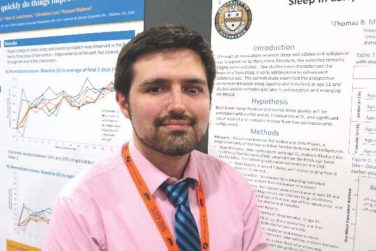If you work on the front lines of medical care treating patients with hepatitis, you may not have time to review all the hepatitis research that enters the medical literature every month. Here’s a quick look at some notable news items and journal articles published over the past month, covering a variety of the major hepatitis viruses.
A Taiwanese study published in Hepatology demonstrated the importance of identifying and tracking viral mutations for monitoring hepatitis B progression and early detection of hepatocellular carcinoma. The authors found that the mutation score for predicting short-term hepatocellular carcinoma risk outperformed other factors, including hepatitis B virus (HBV) DNA levels, viral genotype, and various combinations of risk factors.
Early combination antiretroviral therapy and wider hepatitis C virus (HCV) treatment have the potential to markedly reduce hepatitis C–related mortality , as well as increase survival overall for HIV-infected populations, according to a recent analysis. However, the authors said HCV treatment will need to be greatly scaled up.
Treating all chronic hepatitis C–screened patients for more than 5 years in France with new direct-acting antivirals, regardless of fibrosis stage , would be cost effective, a report revealed. However, the authors warned this would add a cost of 3.5-7.2 billion euros to an already overburdened medical care system.
Most German adolescents who received a full course of hepatitis B virus booster vaccine during infancy were still protected against hepatitis B infection almost 14 years later, according to a study in Human Vaccines & Immunotherapeutics.
Chronic HCV infection is associated with both former and excessive current alcohol consumption , according to an analysis of data from the 2003-2010 National Health and Nutrition Examination Survey. Researchers said public health HCV strategies should implement interventions with emphasis on alcohol abuse, which negatively impacts disease progression for HCV-infected individuals.
Treating patients with hepatitis delta virus genotype 3 with pegylated interferon alpha-2a was correlated with a possible cure rate higher than expected , according to a study in the International Journal of Infectious Diseases.
Widespread media reports in China of infant deaths following hepatitis B vaccine administration was associated with a decline in parental confidence in a vaccine that had been proved safe, and an increased refusal of vaccination, according to a report in the International Journal of Epidemiology. The authors recommended proactive outreach to stakeholders and the media to help mitigate any negative impact of future coincidental adverse events following immunization.
The platelet-to-lymphocyte ratio (PLR) is closely related to disease severity in patients with HCV-related liver disease and to the virologic response in patients with chronic hepatitis C, a recent study revealed. Investigators said dynamic continuous monitoring of the PLR, rather than a single high or low PLR value at a certain time point, will contribute to disease surveillance, with an increasing tendency predicting a good virologic response.
Ledipasvir/sofosbuvir (LDV/SOF) and sofosbuvir plus ribavirin (SOF+RBV) demonstrate a high barrier to resistance in Japanese patients with HCV genotype 1 and 2 infection, according to a study in the Journal of Viral Hepatitis. The authors said the presence of baseline NS5A resistance–associated variants did not impact treatment outcome in genotype 1 Japanese patients treated with LDV/SOF for 12 weeks.
Multilateral cooperation among Chinese vaccine manufacturers, the Chinese National Regulatory Authorization, and the World Health Organization is expediting the entrance of the hepatitis E vaccine Hecolin into the international market, according to a review in Human Vaccines & Immunotherapeutics.
A study in HIV Medicine found that psychiatric disorders were frequent in HIV/HCV-coinfected patients and their rates comparable between groups, even for patients achieving a sustained virologic response.
A review essay in Current Opinion in Infectious Diseases concluded that patients with recurrent HCV following liver transplant will significantly benefit from all oral new direct-acting antivirals, but that ongoing studies would determine the optimal timing and combination in this unique population.
Health care utilization and costs were higher among patients with diabetes and HBV than in those with diabetes alone, according to a recent study. The authors said the results support the need for HBV vaccination among unvaccinated diabetes patients.
A study in the Journal of Acquried Immune deficiency Syndromes provides additional support for the use of the CD4/CD8 ratio for routine monitoring of immune activation and inflammation in HIV-positive patients, including those coinfected with the hepatitis C virus. However, the authors said an unexpected association between cleared HCV and a lower CD4/CD8 ratio requires additional study.
A study of hepatitis B vaccination found that dosages of both 5-mcg HBV vaccine and 10-mcg HBV vaccine could be used to immunize children safely , while the 10-mcg vaccine could be used for adults aged 15-24 years, and a higher dosage of the HBV vaccine might be required for adults aged 25 years and older.
Levels of the let-7 family of microRNAs circulating in plasma and extracellular vesicles correlate with hepatic fibrosis progression in chronic HCV infection, according to a study in Hepatology.
On Twitter @richpizzi






